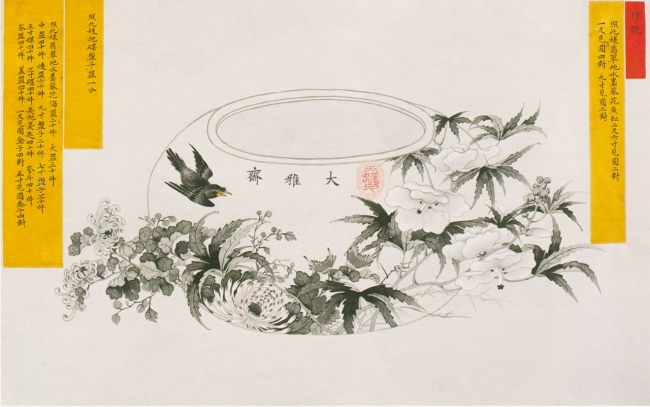VMPEA: Yan Jin

Yan Jin ( Ph.D. student, University of Chicago)
"From Paper to Pottery: Imperial Yang for the Production of Dayazhai Ceramic Wares in Nineteenth-Century China"
*There will be no discussant for this event.
Abstract
At the imperial court of Qing China (1644-1911), how exactly was it ensured that the things seen and used by the emperor were made according to the imperial order and taste? Based on the myriad of records of Neiwufu 內務府 (Imperial Household Department), a general summary of the mechanism can be made: After the emperor had given out an order to have a thing—ranging from a small bowl to attires and to an entire architecture complex—made, a yang 樣 that visually delineates the thing would first be presented to the emperor by court officials or artisans working at the Imperial Household Department. The emperor would make comments and changes based on the yang and give his approval, according to which the final thing could then be produced. This process could go back and forth multiple times, during which it was the yang that was amended until it was able to meet the emperor’s expectation. But what is this thing called “yang?” By definition, the character itself may be translated as “shape/appearance,” “sample,” “pattern,” or “model.” However, the answer to this question is actually not so much straightforward and is the focus of this presentation.
In particular, this presentation looks closely at one set of such yang created in 1873-74, the last years of Emperor Tongzhi 同治’s reign (r. 1862-1874), for the production of a group of ceramic wares for Empress Dowager Cixi 慈禧 (1835-1908), now commonly referred to as Dayazhai 大雅齋 (Studio of Utmost Refinement) wares. Departing from previous scholarship on the Dayazhai ensemble, which pay more attention to the wares themselves rather than the yang and focus on the pictorial themes and stylistic features of these wares, this presentation instead aims to highlight the active role yang played in the overall commission and production process. By probing into the Dayazhai yang’s visual schemes, its maker and audiences, and the translation from yang to ceramics, I aim to demonstrate that rather than being merely a secondary object made for the creation of something final, the Dayazhai ceramic yang occupied a hierarchical position higher than the actual wares in both practical and conceptual terms because of its centrality in the shaping and delivery of Cixi’s ideals for imperial ceramics.
Bio
Yan Jin is a PhD student in the Department of Art History at the University of Chicago, studying visual and material culture of late imperial China. Her research interests include cross-regional exchanges, negotiation between global and local artistic traditions, and issues of materiality and intermediality. Yan received her BA in Art History from the University of North Carolina at Chapel Hill (2018) and her MA from the University of Chicago (2019) with a thesis on the production and display of glass mirror table screens at Emperor Qianlong’s court.
Hybrid event
*in-person: CWAC 152
*online: Please use this link to register for the zoom meeting. password: dyz518
※For this particular event, we will be having dinner after the talk. For those who would like to join this gathering after the event, please complete this form by Sunday (May, 15th) 11:59 p.m. so that we can place enough food for everyone. For your information, we are planning to order Italian cuisine.
Image Details:
Dayazhai Yang no. 4, 1873-74. Ink and color on paper, 45.4 x 70cm. The Palace Museum, Beijing.